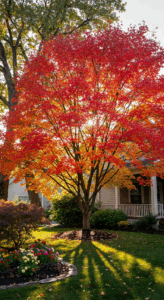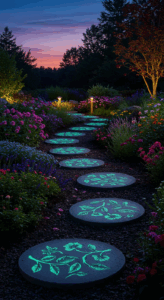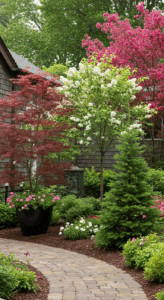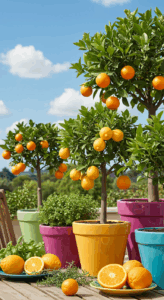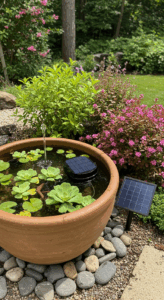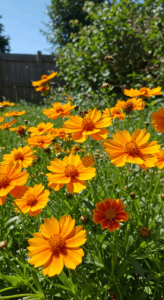1. Twig Trellis: A Rustic Support for Climbing Plants
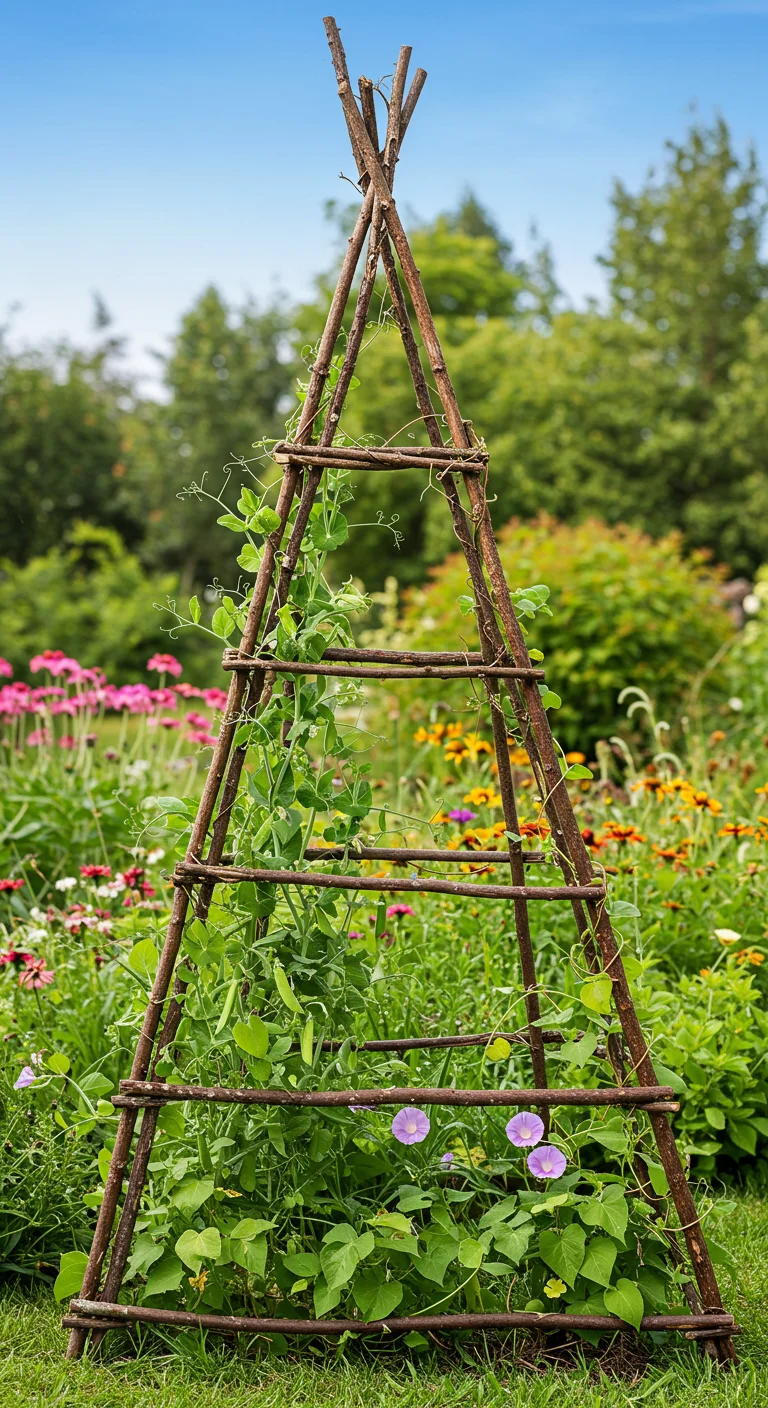
Creating a twig trellis is a simple and effective way to support climbing plants while adding rustic charm to your garden. Begin by gathering sturdy twigs of varying lengths, ensuring they are free from rot and pests. Arrange the twigs into a triangular or rectangular frame, securing them at the joints with twine or wire. For added stability, you can drive the base of the trellis into the ground or anchor it with larger stakes. Once constructed, plant your climbing plants, such as peas or morning glories, at the base of the trellis, encouraging them to weave through the branches as they grow. This not only promotes healthy plant growth but also creates an inviting visual focal point in your outdoor space, blending beautifully with the natural surroundings.
2. Nature’s Fence: Crafting a Twig Barrier
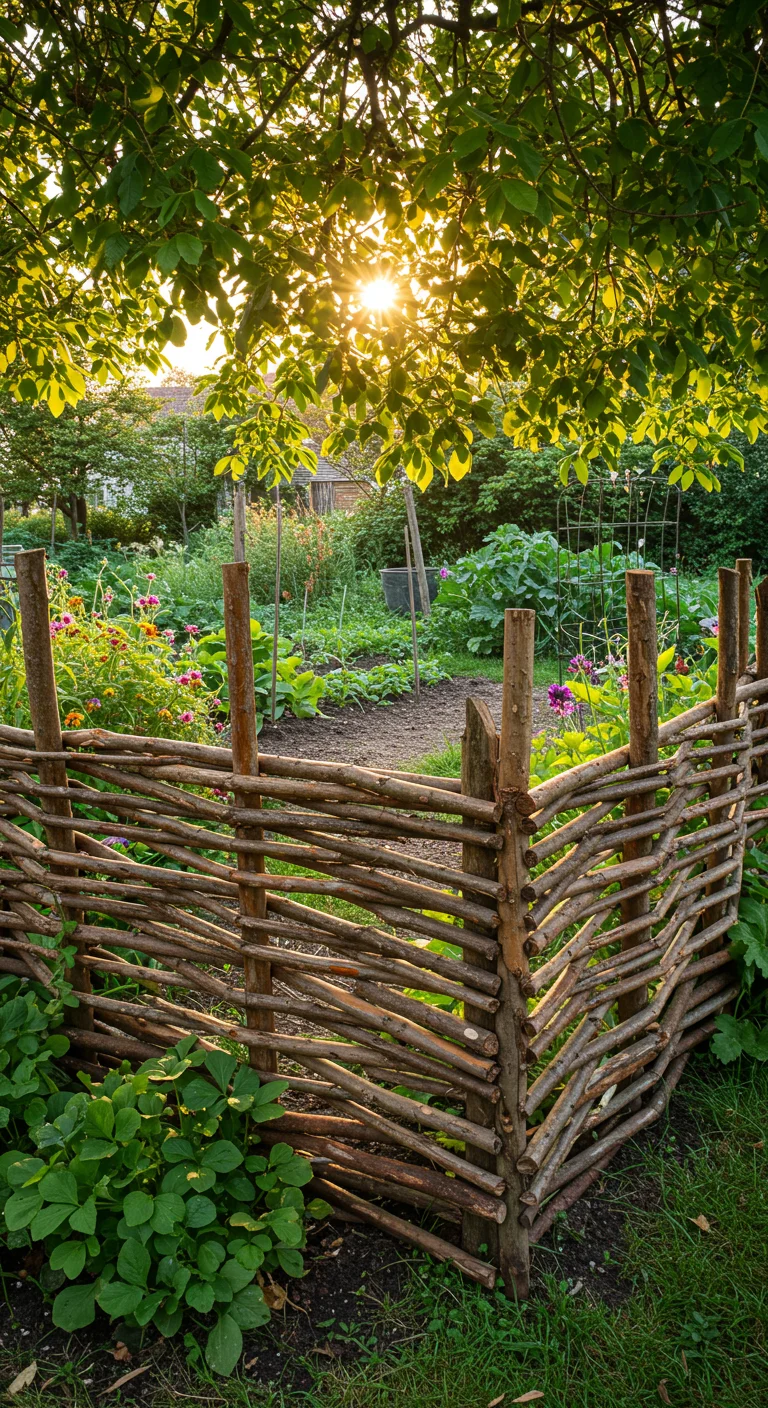
Creating a twig barrier is an eco-friendly and visually appealing way to define garden spaces or protect delicate plants. Start by collecting a variety of twigs, ideally those that are sturdy yet flexible, such as willow or birch. Cut the twigs to an equal length, usually around 2-3 feet, to maintain uniformity. Using a spade, dig a shallow trench along the desired boundary line and insert the twigs vertically, pushing them into the soil at least 6 inches deep for stability. You can weave additional twigs horizontally between the vertical ones to enhance the structure and add a decorative touch. This natural fence not only marks your garden’s perimeter but also attracts beneficial insects and wildlife, making it both functional and aesthetically pleasing. Regular maintenance involves checking for decay and replacing any damaged twigs as needed.
3. Whimsical Twig Garden Markers: Personalize Your Planting
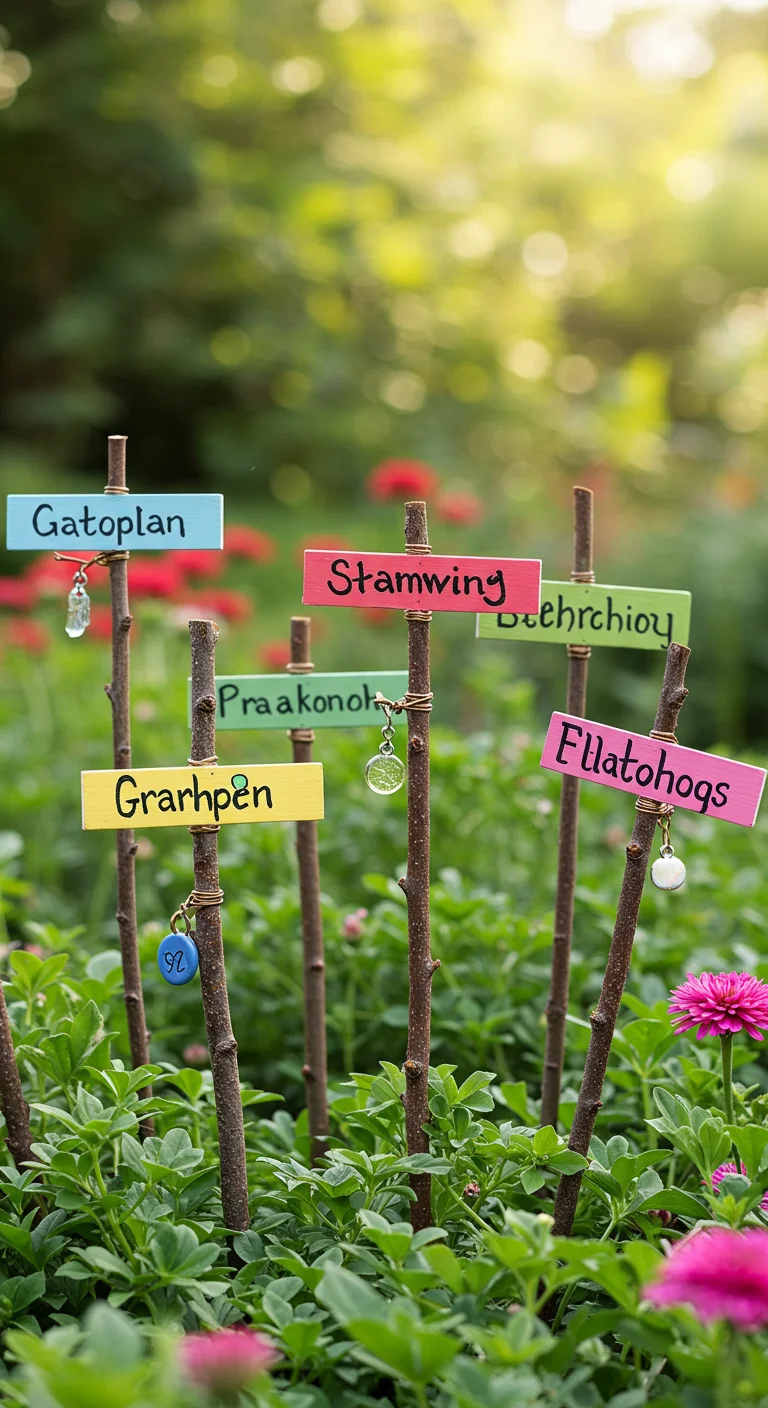
Whimsical twig garden markers are a fantastic way to personalize your planting while adding a charming touch to your garden. To create these unique markers, gather small, straight twigs from your yard or local park. Trim them to your desired height—about 6 to 12 inches works well—and use a sharp knife or scissors to create a pointed end for easy insertion into the soil. Next, label each twig with the name of the plant using waterproof paint or a permanent marker. For an extra layer of whimsy, you can wrap twine or colorful yarn around the tops of the markers, or even attach small decorative charms. Not only do these markers help you identify your plants, but they also enhance the natural beauty of your garden, making it a delightful space to nurture your green thumb.
4. Twig Wreaths: Seasonal Decor from Your Backyard
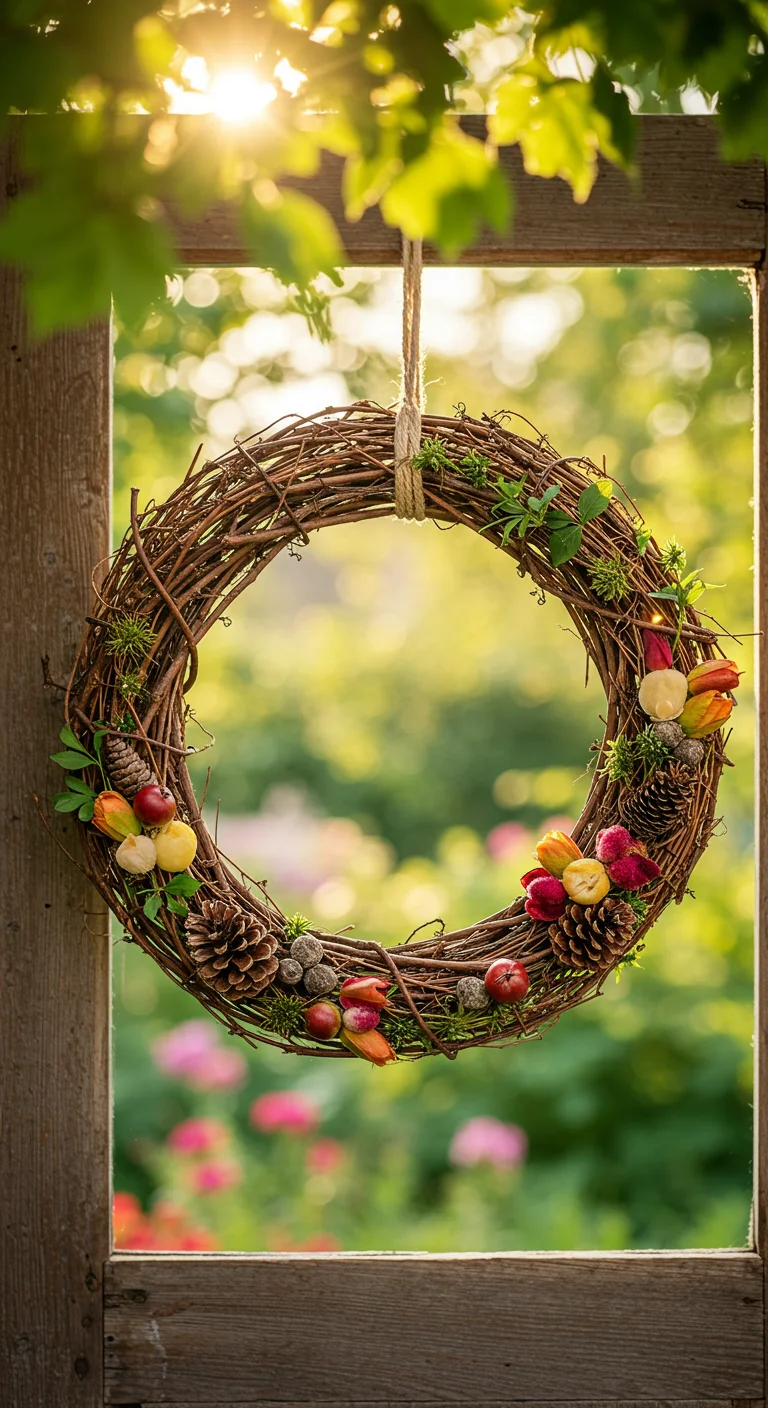
Creating twig wreaths is an excellent way to incorporate natural elements into your seasonal decor while utilizing materials right from your backyard. Start by collecting flexible twigs, branches, and vines, ensuring they are free from pests and rot. To form your wreath, create a circular base by intertwining the twigs, securing them with floral wire or twine for added stability. You can embellish your wreath according to the season: adorn it with pinecones in winter, fresh flowers in spring, or colorful leaves in autumn. This DIY project not only enhances your home’s aesthetic but also promotes sustainability by reusing natural materials. Hang your wreath on your front door or use it as a centerpiece to welcome guests throughout the seasons.
5. Cozy Twig Birdhouses: A Home for Feathered Friends
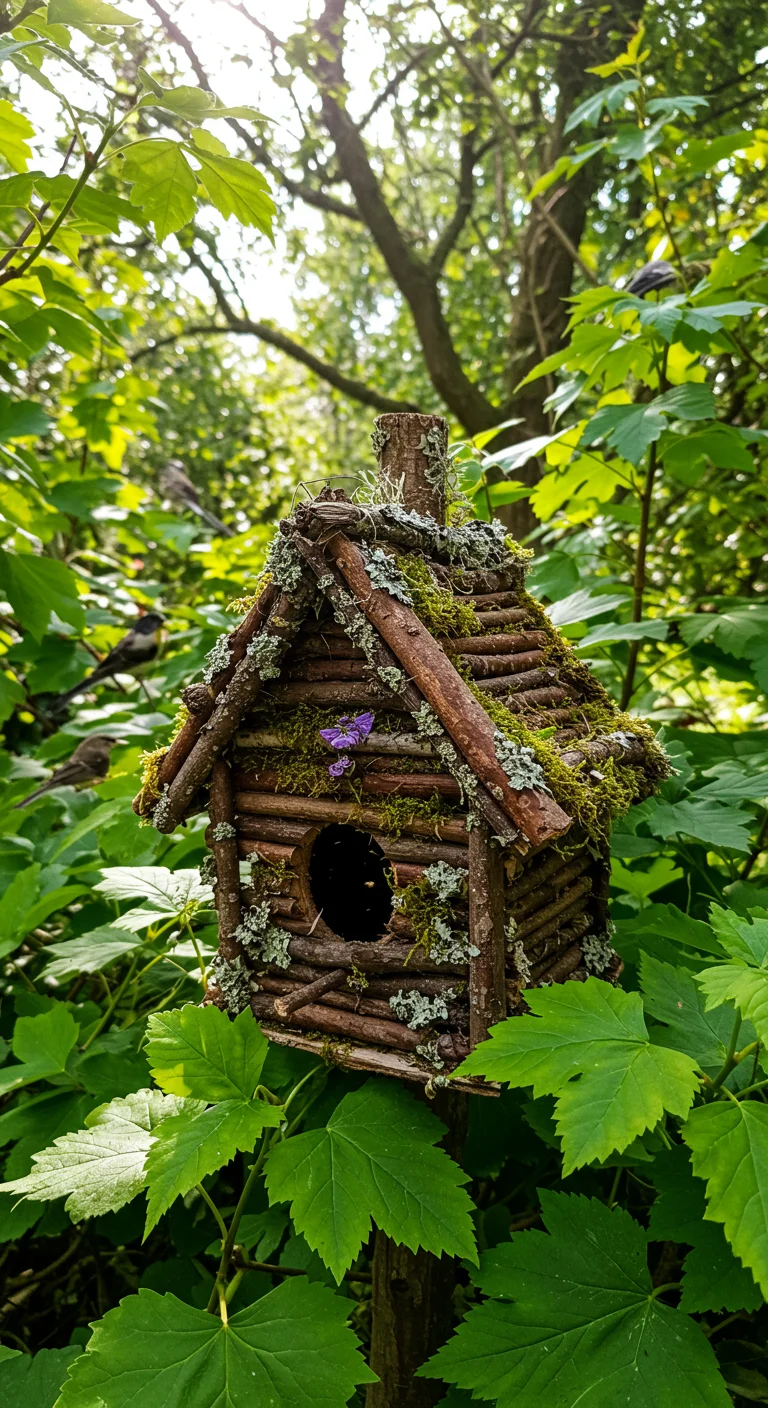
Creating cozy twig birdhouses is an excellent way to attract feathered friends to your garden while utilizing natural materials. Start by selecting sturdy twigs, ideally from trees like willow or birch, which are both durable and aesthetically pleasing. Construct a simple box shape, ensuring there is ample ventilation and drainage; make an entrance hole about 1.5 inches in diameter for small birds. Decorate the exterior with natural elements such as moss or lichen to help the birdhouse blend into the surroundings. Hang your birdhouse in a sheltered spot, ideally between 5 to 10 feet off the ground, away from predators. Not only do these twig birdhouses provide shelter for birds, but they also add rustic charm to your garden space, fostering a connection with nature that can be enjoyed year-round.
6. Twig Planters: Eco-Friendly Containers for Your Plants
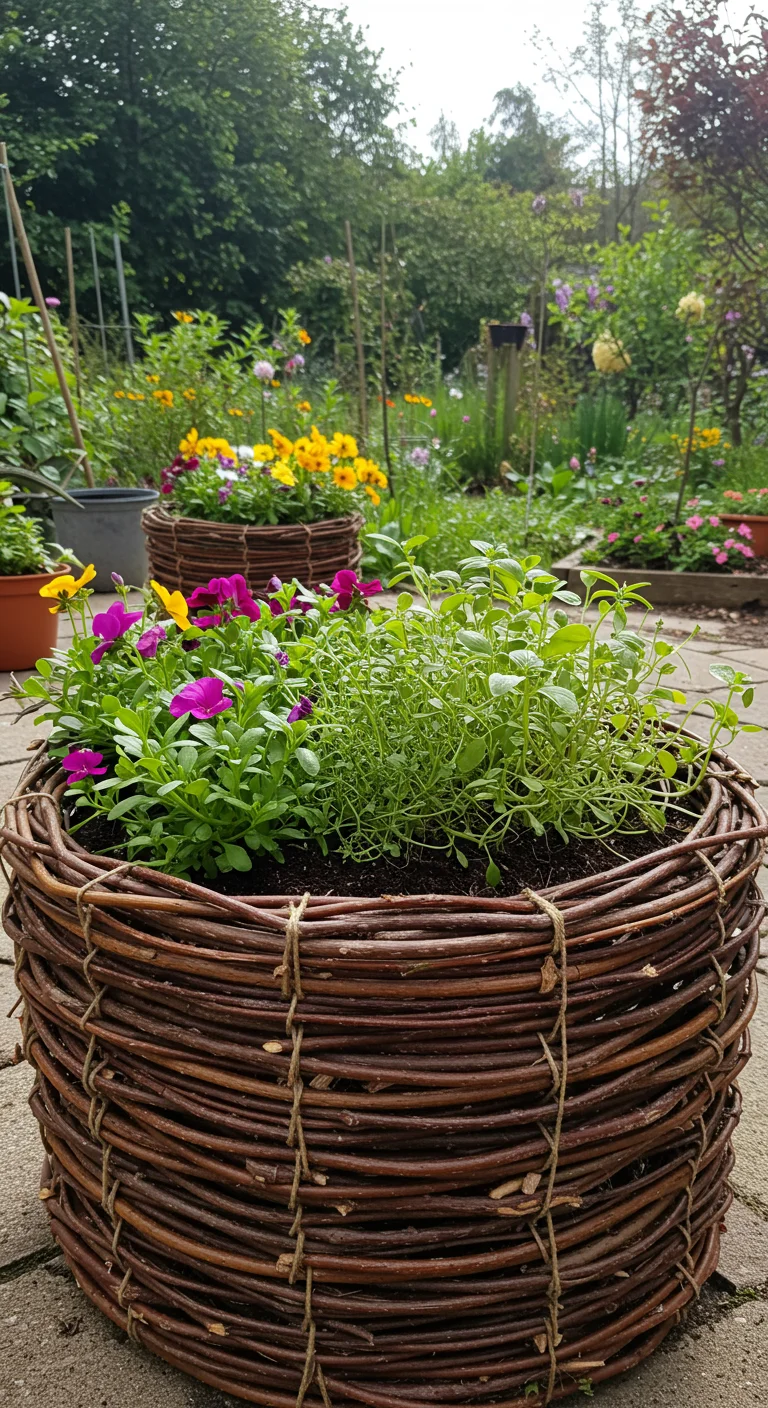
Twig planters are an innovative and eco-friendly way to add a rustic charm to your garden while promoting sustainability. To create your own twig planter, gather flexible twigs from trees or shrubs, ensuring they are healthy and free of pests. Begin by shaping the twigs into a round or rectangular frame, securing them together with natural twine or jute string. Line the interior with a biodegradable material such as burlap or coconut coir to retain soil and moisture while allowing drainage. Fill the planter with quality potting soil and select your favorite plants, whether vibrant flowers or hardy herbs. This project not only recycles natural materials but also enhances your garden’s aesthetic, providing a cozy and inviting atmosphere for your plants to thrive.
7. Rustic Twig Lanterns: Illuminate Your Garden Evenings
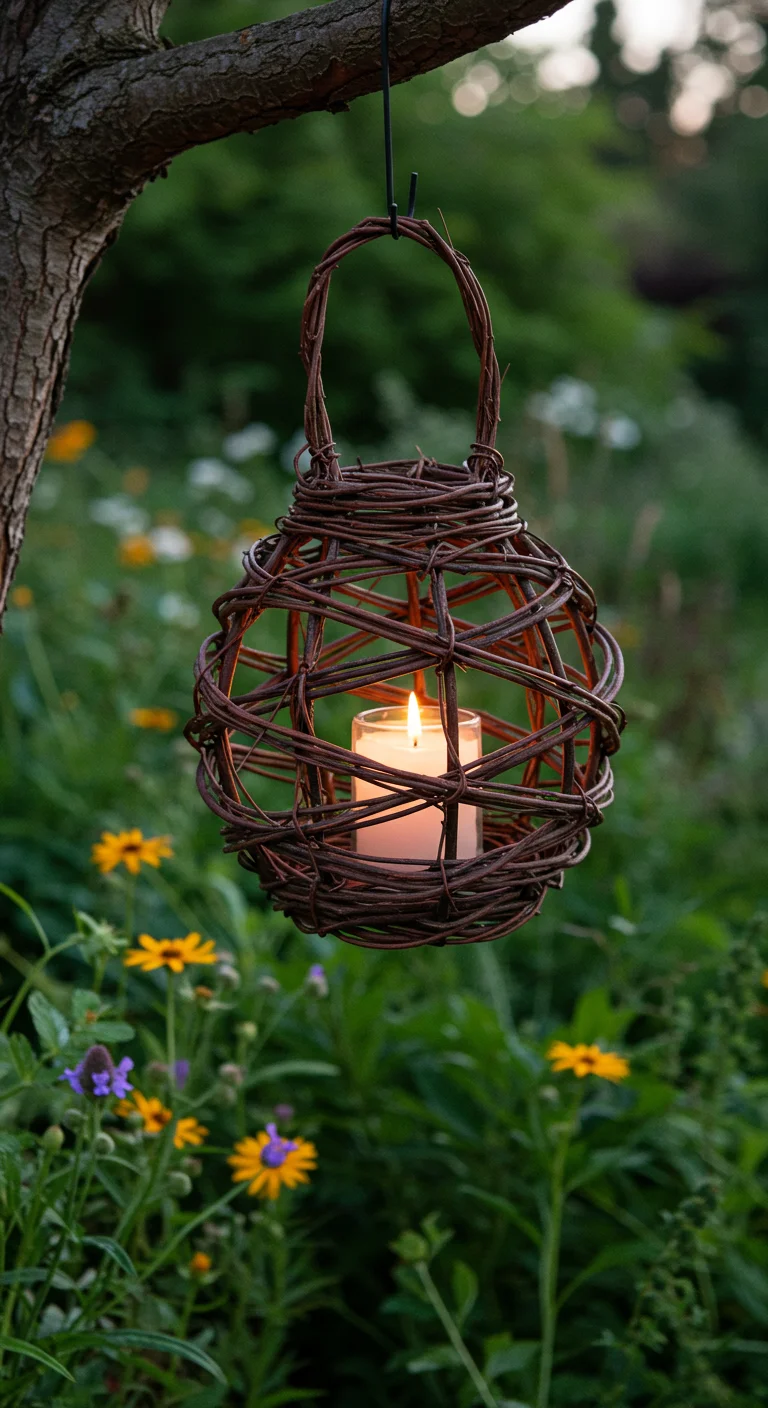
Creating rustic twig lanterns is an enchanting way to illuminate your garden evenings while adding a natural touch to your outdoor decor. To make these charming lanterns, gather an assortment of twigs and branches, ensuring they are sturdy yet flexible. Start by forming a cylindrical frame using the twigs, securing them with twine or wire at the ends. Next, line the inside with a glass jar or tealight holder to safely hold your candle or LED light. For an extra touch, embellish the exterior with moss, leaves, or wildflowers, creating a harmonious blend with your garden’s aesthetics. Place these lanterns along pathways or hang them from trees using jute rope to cast a warm, inviting glow that enhances your outdoor gatherings and creates a cozy ambiance as dusk falls.
8. Twig and Stone Pathway: A Natural Walkway Solution
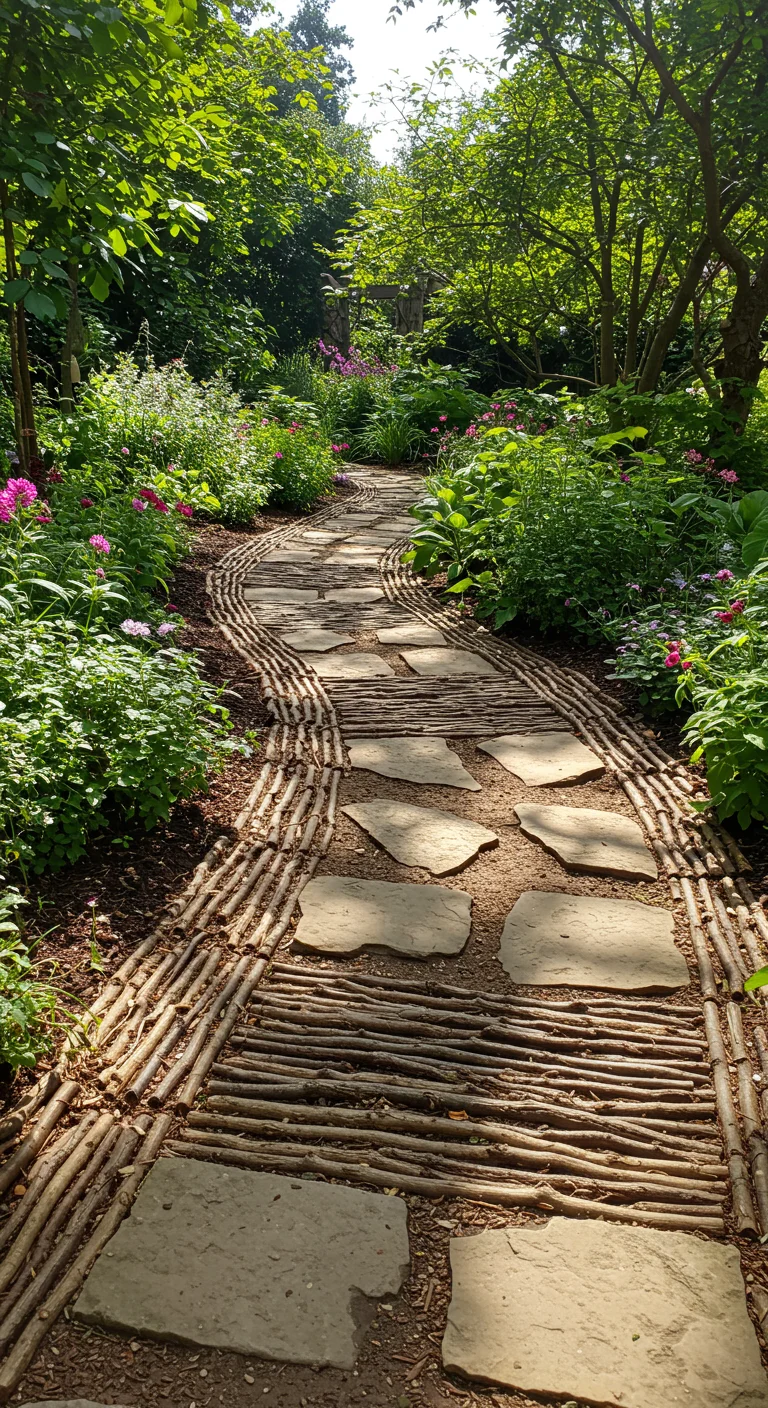
Creating a twig and stone pathway is an eco-friendly and cost-effective way to enhance your garden while providing a functional walkway. Start by laying down a base of compacted soil or gravel to ensure stability. Next, arrange flat stones or pavers to form the main structure of the pathway, leaving small gaps between them. Fill these gaps with twigs, branches, or even mulch, which not only adds a rustic charm but also helps with drainage and prevents weed growth. This natural walkway solution blends seamlessly with the surrounding landscape and can be customized in shape and design to suit your garden’s aesthetic. Plus, using materials found in your own yard makes this project both budget-friendly and sustainable.
9. Twig Trellis Screens: Enhance Privacy in Style
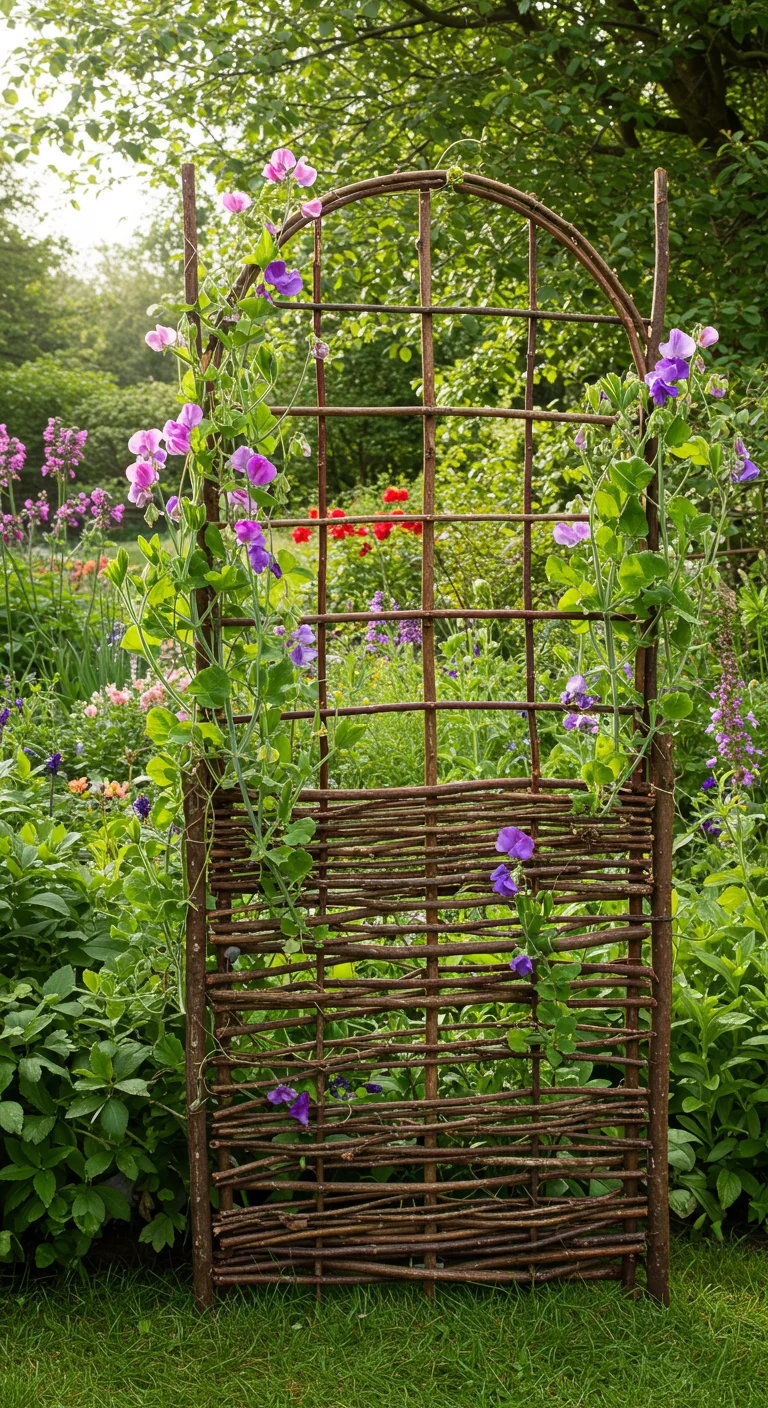
Twig trellis screens are an innovative and stylish way to enhance privacy in your garden while embracing natural aesthetics. These screens can be constructed using twigs or branches, creating a rustic yet functional barrier that effectively blocks unwanted views while allowing light and air to flow through. To build your own, gather sturdy twigs of similar length and bind them together using twine or wire in a grid-like pattern, ensuring stability. You can position the trellis along fences, patios, or garden paths; adding climbing plants like sweet peas or clematis will further enhance its beauty and privacy. This project is not only budget-friendly but also allows you to personalize your garden space in a sustainable manner, making it a perfect addition to any outdoor setting.
10. Simple Twig Cloche: Protect Your Delicate Seedlings
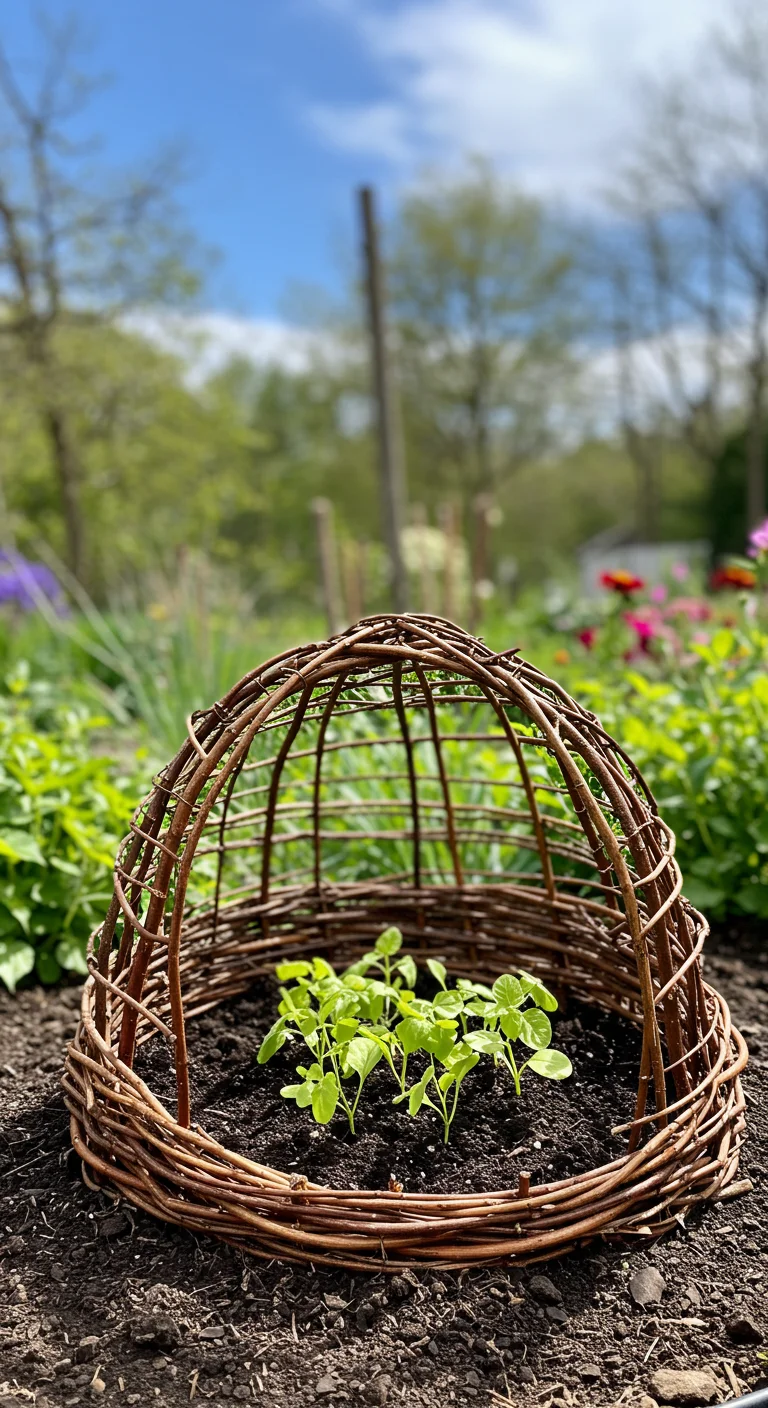
Creating a simple twig cloche is an effective way to protect your delicate seedlings from harsh weather conditions and pests. To make one, gather several sturdy twigs and cut them to uniform lengths, typically around 2 to 3 feet. Arrange the twigs in a circle around your seedlings, forming a protective barrier. Next, use thinner twigs or flexible branches to create a dome shape by arching them over the circle of twigs, securing them in place with garden twine or string. This structure not only provides shelter but also allows light and air to circulate, fostering a healthy growing environment. Remember to remove the cloche as your seedlings grow to avoid restricting their development, and enjoy the fruits of your labor as your garden flourishes.
11. DIY Twig Furniture: Outdoor Seating with a Twist
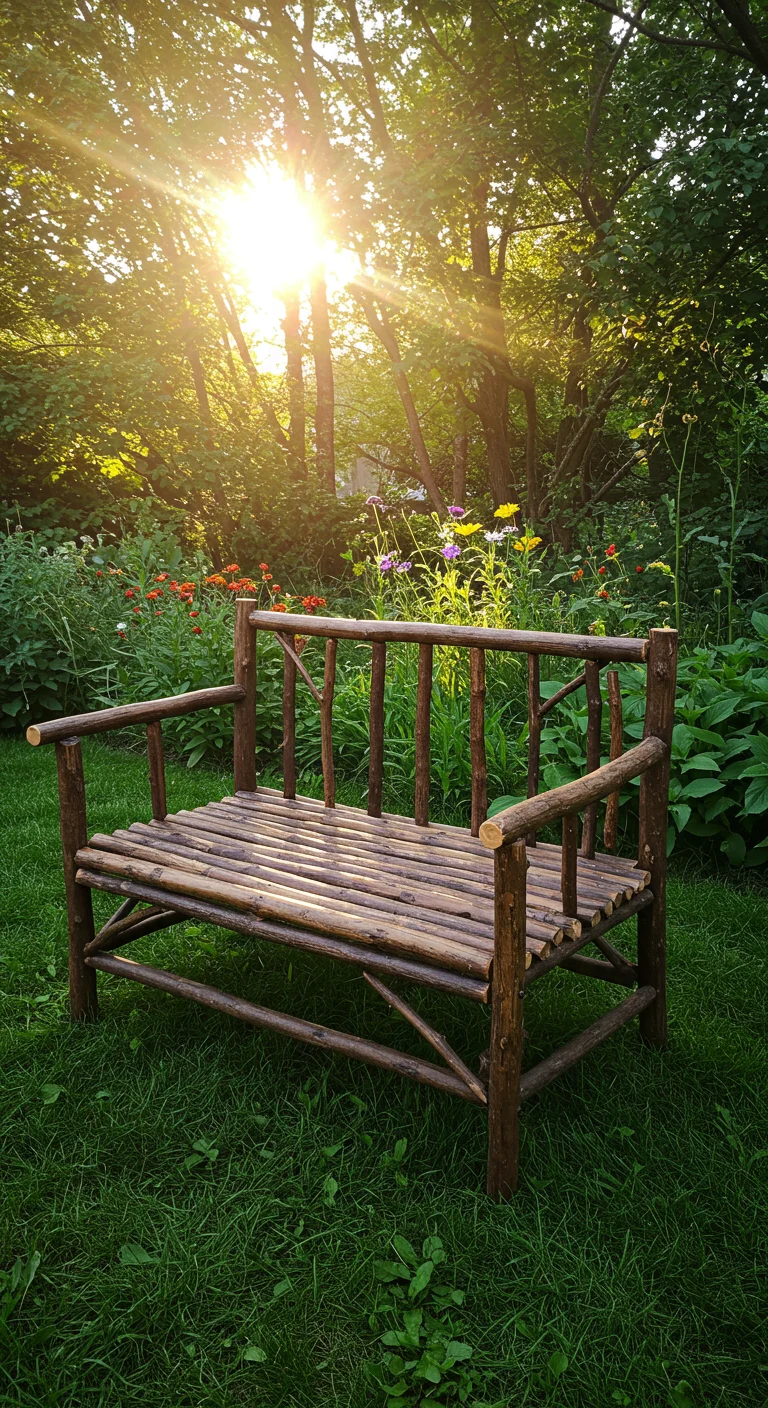
DIY twig furniture is a creative and budget-friendly way to enhance your outdoor space with unique seating options. Start by gathering sturdy twigs from your garden or local area, ensuring they are of similar thickness for a cohesive look. For a simple bench, construct a frame using thicker branches as the base and attach smaller twigs horizontally for the seat, securing them with twine or wood glue. To create a rustic chair, use a combination of twigs for the legs, backrest, and seat, ensuring stability. Finish your piece with a protective wood sealant to withstand the elements. This whimsical furniture not only provides a comfortable seating area but also adds a charming, natural aesthetic to your garden, making it a perfect DIY project for nature enthusiasts.
12. Twig Tuteurs: Elegant Support for Your Vines
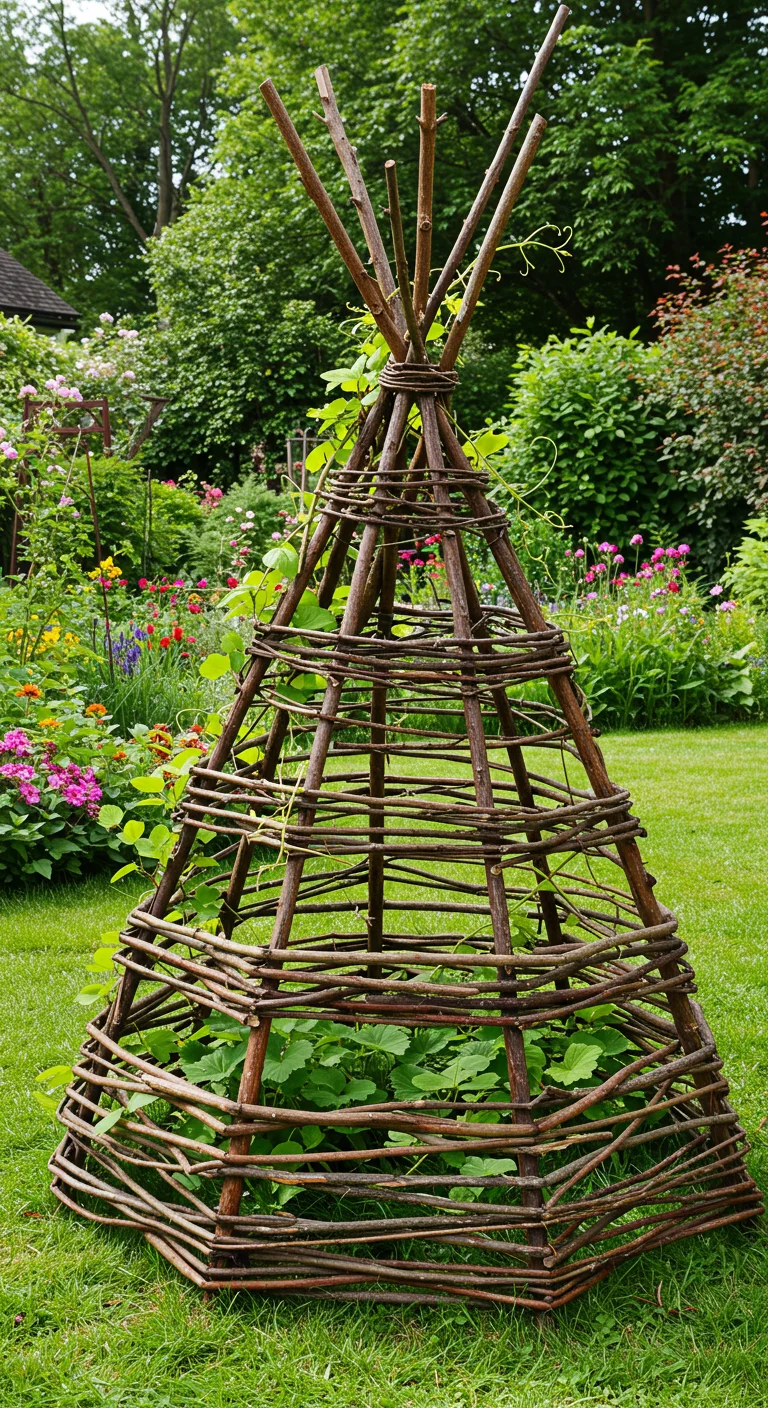
Twig tuteurs offer a stylish and eco-friendly solution for supporting climbing vines in your garden. To create your own, gather a selection of sturdy twigs or branches, ideally around 4-6 feet long, and arrange them in a teepee or wigwam shape, securing the base with twine or wire. This natural structure not only provides the necessary support for your plants to climb but also adds a rustic charm to your garden space. As your vines grow, they will intertwine with the twigs, creating a beautiful and functional focal point. This project is budget-friendly, allowing you to repurpose materials from your yard while enhancing the aesthetic of your garden. For added stability, consider placing the tuteurs in a corner where they can benefit from wind protection and sunlight exposure.
13. Twig Wall Art: Bringing Nature Indoors
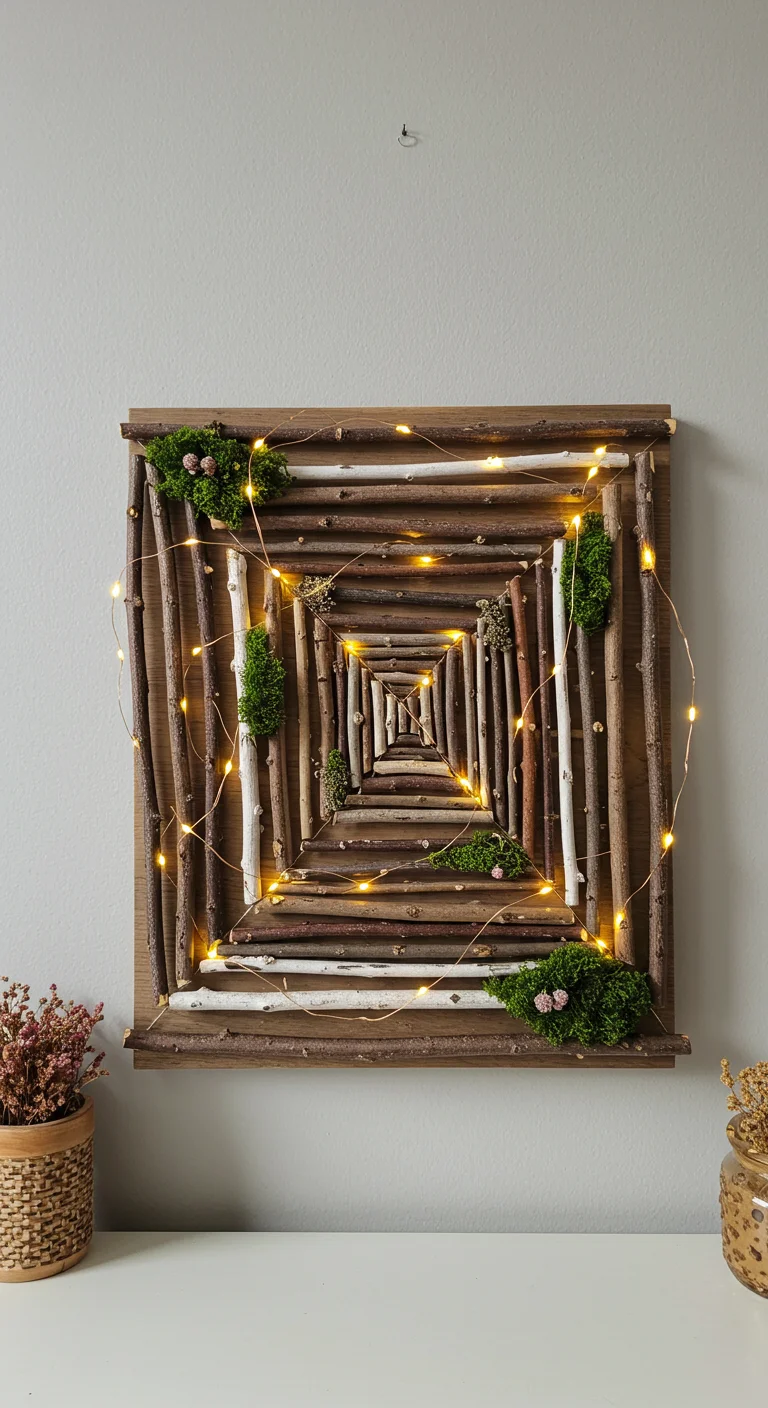
Twig wall art is a fantastic way to incorporate the organic beauty of nature into your home decor while also being budget-friendly. To create your own, gather twigs of varying lengths and thicknesses from your garden or local area. Begin by arranging them in a captivating design on a canvas or wooden board, using hot glue to secure them in place. You can paint the twigs or leave them natural for a more rustic look. Consider adding embellishments like moss, dried flowers, or even fairy lights to enhance the visual appeal. This project not only brings a touch of the outdoors inside but also allows for personal expression as you customize the piece to fit your home’s aesthetic. Perfect for beginners, twig wall art can brighten up any room while showcasing your creative flair.
14. Twig Fruit and Veggie Baskets: Harvest in Style
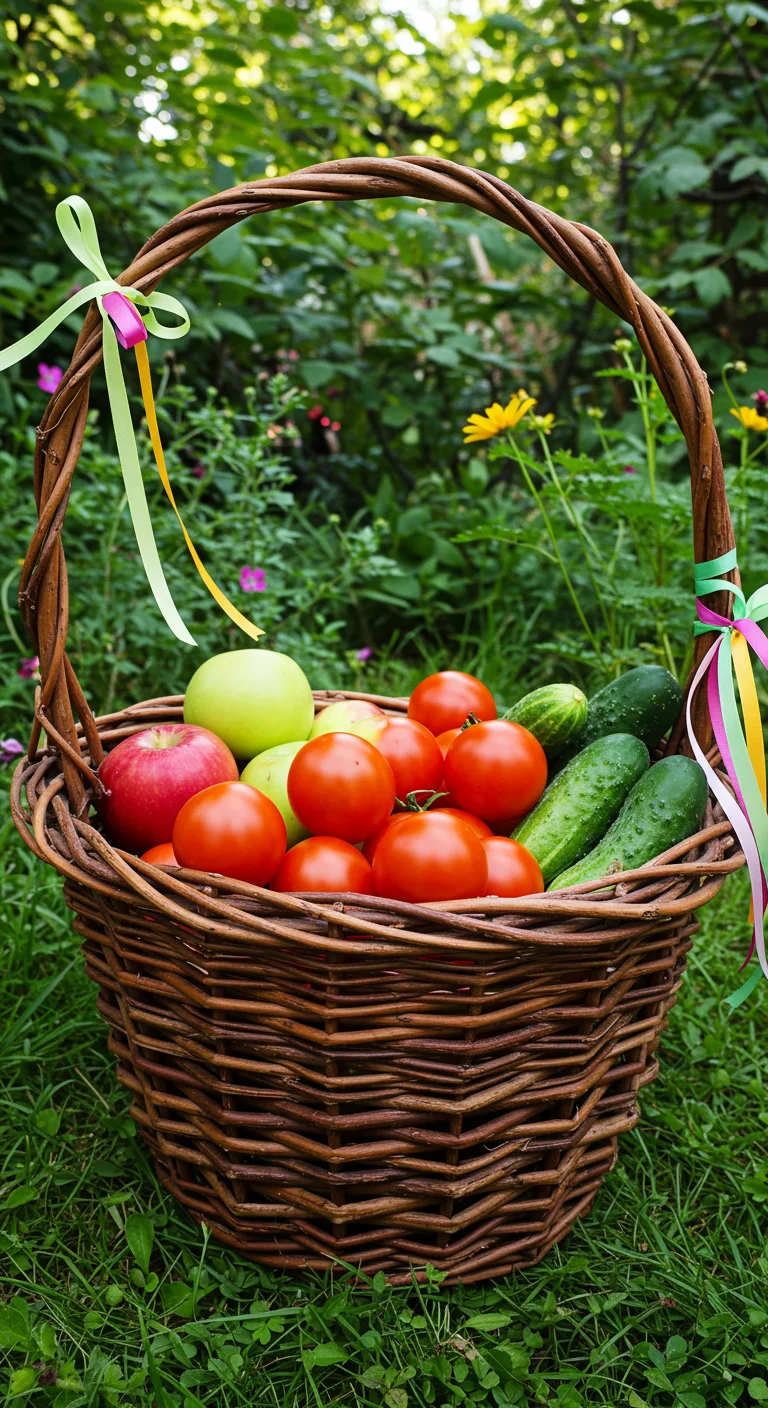
Create charming twig fruit and veggie baskets to harvest your garden’s bounty in style! Start by selecting sturdy twigs from your yard or a nearby wooded area, ensuring they are free from rot. Use a strong twine or natural jute rope to bind the twigs into a basket shape, weaving them together for added durability. For a whimsical touch, incorporate colorful ribbons or dried flowers. These baskets not only serve as functional containers for your produce but also add a rustic aesthetic to your gardening routine. Perfect for carrying freshly picked tomatoes, cucumbers, or apples, these DIY baskets can also make lovely gifts for fellow gardeners. Plus, they are an eco-friendly project that utilizes natural materials, promoting sustainability in your gardening practices.
15. Twig Table Centerpieces: Natural Beauty for Gatherings
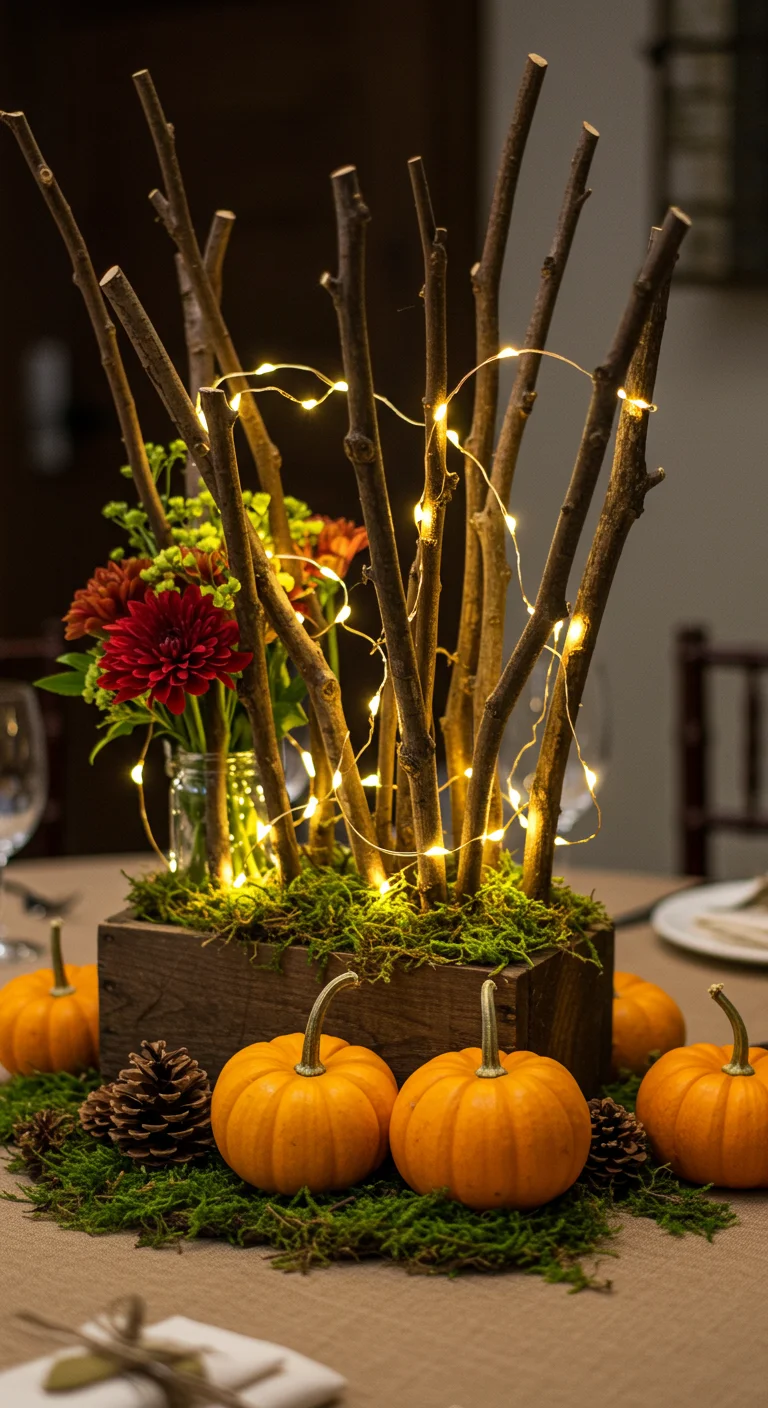
Twig table centerpieces are a charming and eco-friendly way to elevate your gatherings. Start by collecting twigs of varying sizes and textures from your garden or local park. Arrange them in a vase or a rustic container, such as a wooden box or a mason jar, to create a natural focal point for your table. Enhance the look by incorporating seasonal elements like flowers, moss, or even small pumpkins for a cozy touch. To add a whimsical feel, consider wrapping twine or string lights around the twigs. This DIY project not only brings the beauty of nature indoors but also serves as a conversation starter, making it perfect for casual dinners or festive occasions. Plus, it’s a budget-friendly option that showcases your creativity and love for the outdoors.
16. Twig Chimes: Soothing Sounds for Your Garden
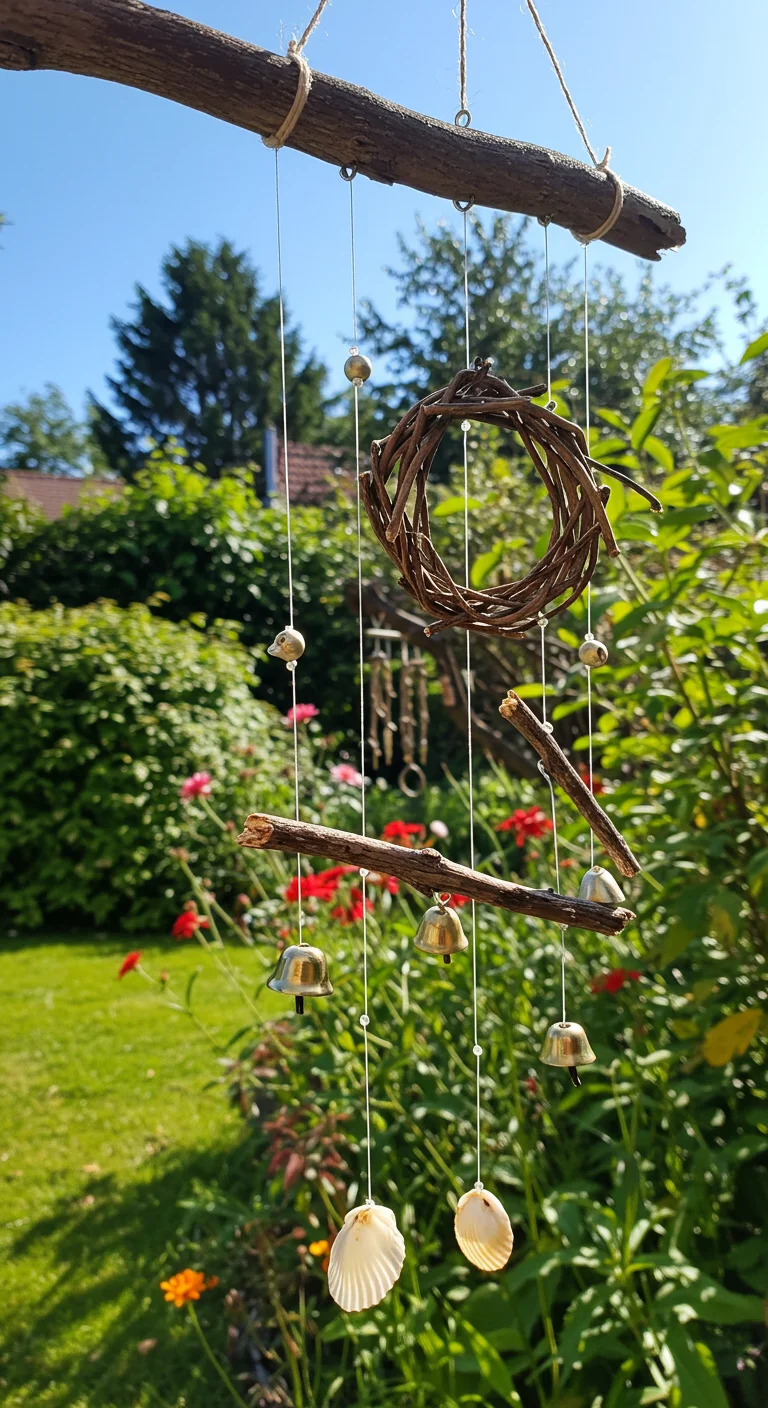
Creating twig chimes is a delightful way to enhance the auditory landscape of your garden while utilizing natural materials. To make your own twig chimes, start by gathering a selection of twigs of varying lengths and thicknesses, which will produce different tones when struck. Use a sturdy branch or a wooden dowel as the base to hang your twigs from. Securely tie each twig with twine or fishing line, spacing them evenly to allow for movement in the wind. You can also add small bells or shells to enhance the sound. Hang your chimes in a location where they can catch the breeze, such as near a patio or garden entrance, to create a soothing atmosphere filled with gentle, melodic sounds that can elevate your outdoor space and relax your mind.
17. Twisted Twig Mirror Frame: Reflecting Nature’s Charm
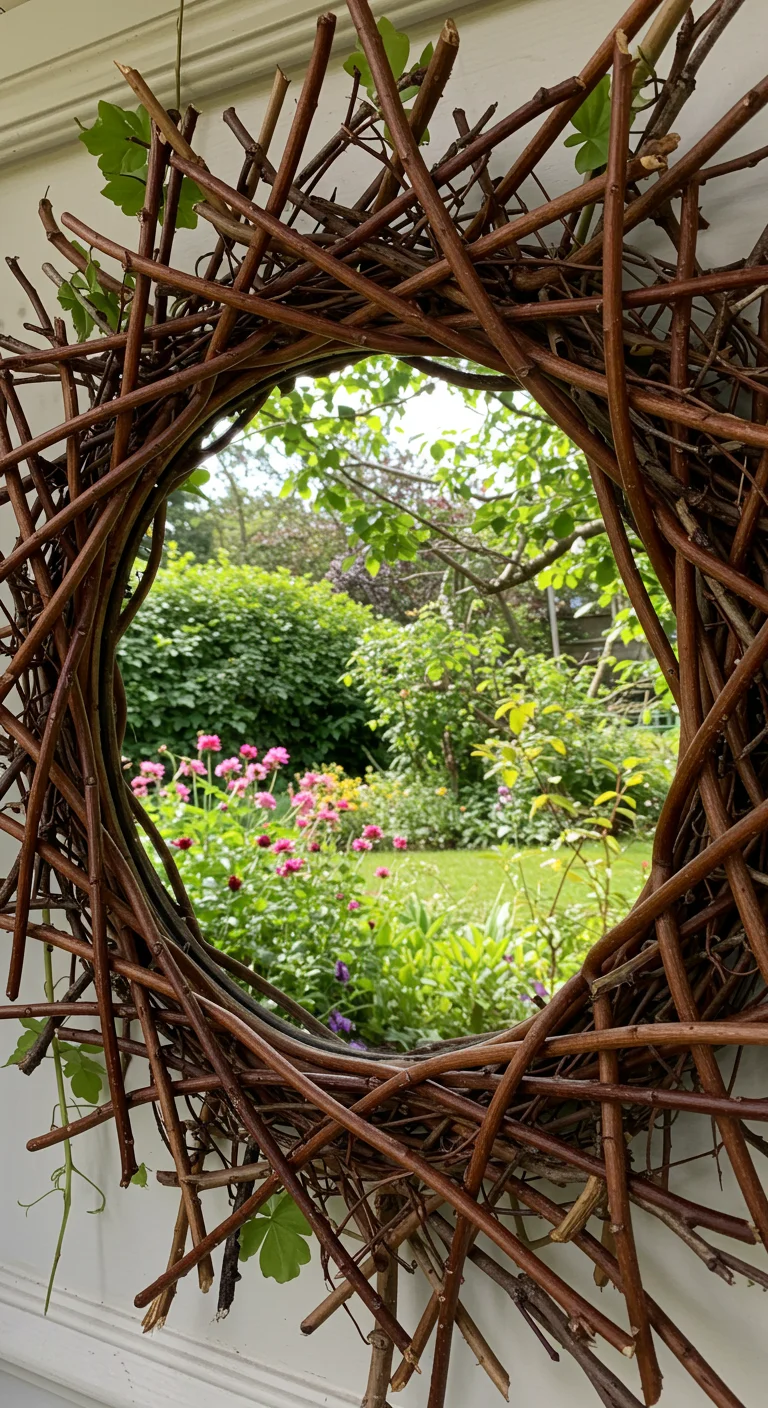
Creating a twisted twig mirror frame is an enchanting garden project that adds a touch of rustic charm and natural beauty to any space. Start by gathering flexible twigs from your garden or local area, ensuring they are clean and free from any pests. Using a simple mirror and a sturdy backing board, carefully arrange the twigs in a spiral or crisscross pattern around the mirror’s edge, securing them with hot glue or twine for added stability. This not only enhances the mirror’s aesthetic but also creates a unique reflection of the garden surroundings. For an extra touch, consider painting the twigs with eco-friendly paint or leaving them in their natural state for a more organic look. This project is both budget-friendly and a delightful way to showcase your creative flair while bringing a piece of nature indoors.
18. Garden Screens: Create Your Private Oasis with Twigs
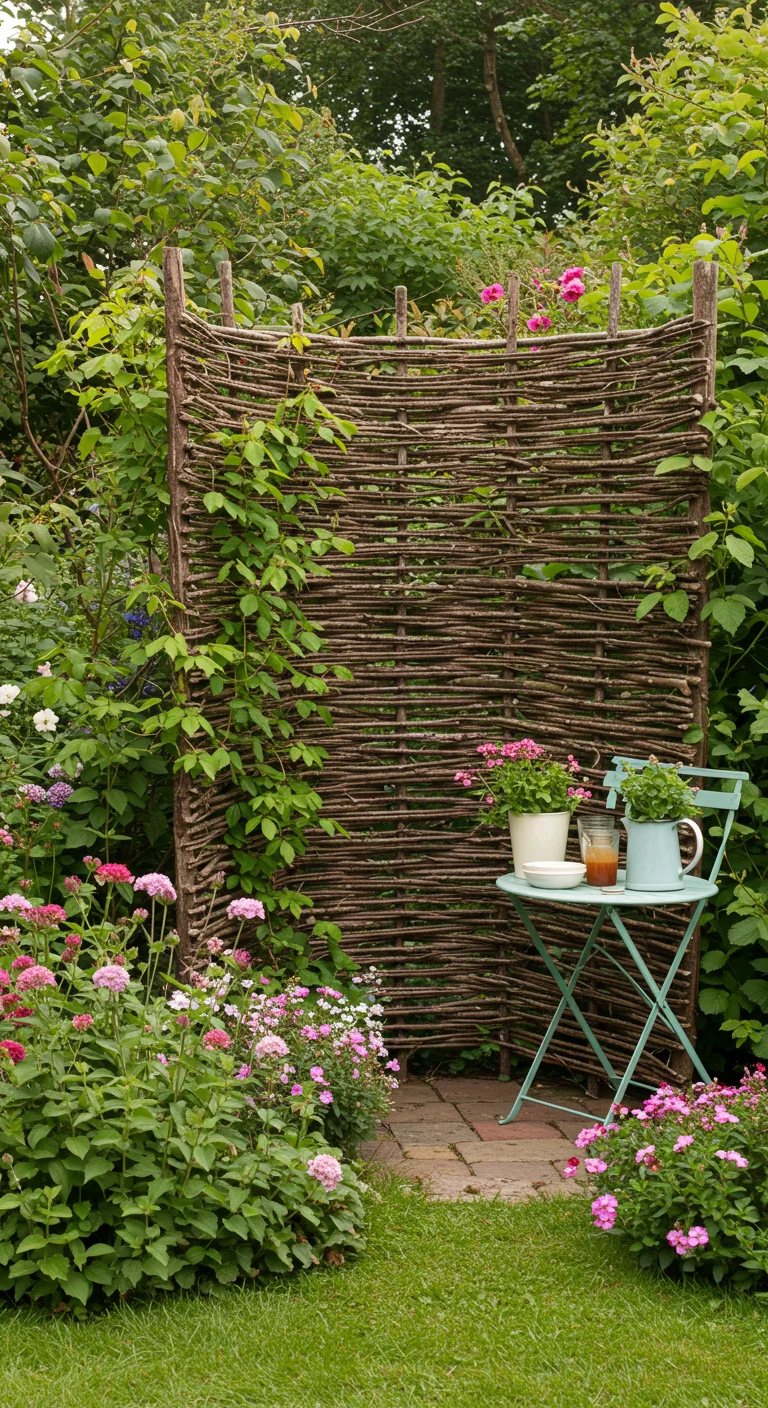
Garden screens made from twigs can transform your outdoor space into a serene private oasis. Start by gathering sturdy twigs of varying lengths, and then weave them together using natural twine or jute rope, creating a rustic, yet functional, barrier. Position these screens strategically to block unwanted views or create cozy nooks for relaxation and meditation. You can enhance the screens with climbing plants or seasonal flowers, which will not only add color but also provide additional privacy. This eco-friendly project is not only budget-friendly but also allows you to repurpose materials that might otherwise go to waste, making it a perfect addition to any garden.
19. Twig Fairy Houses: Enchanting Touches for Kids’ Gardens
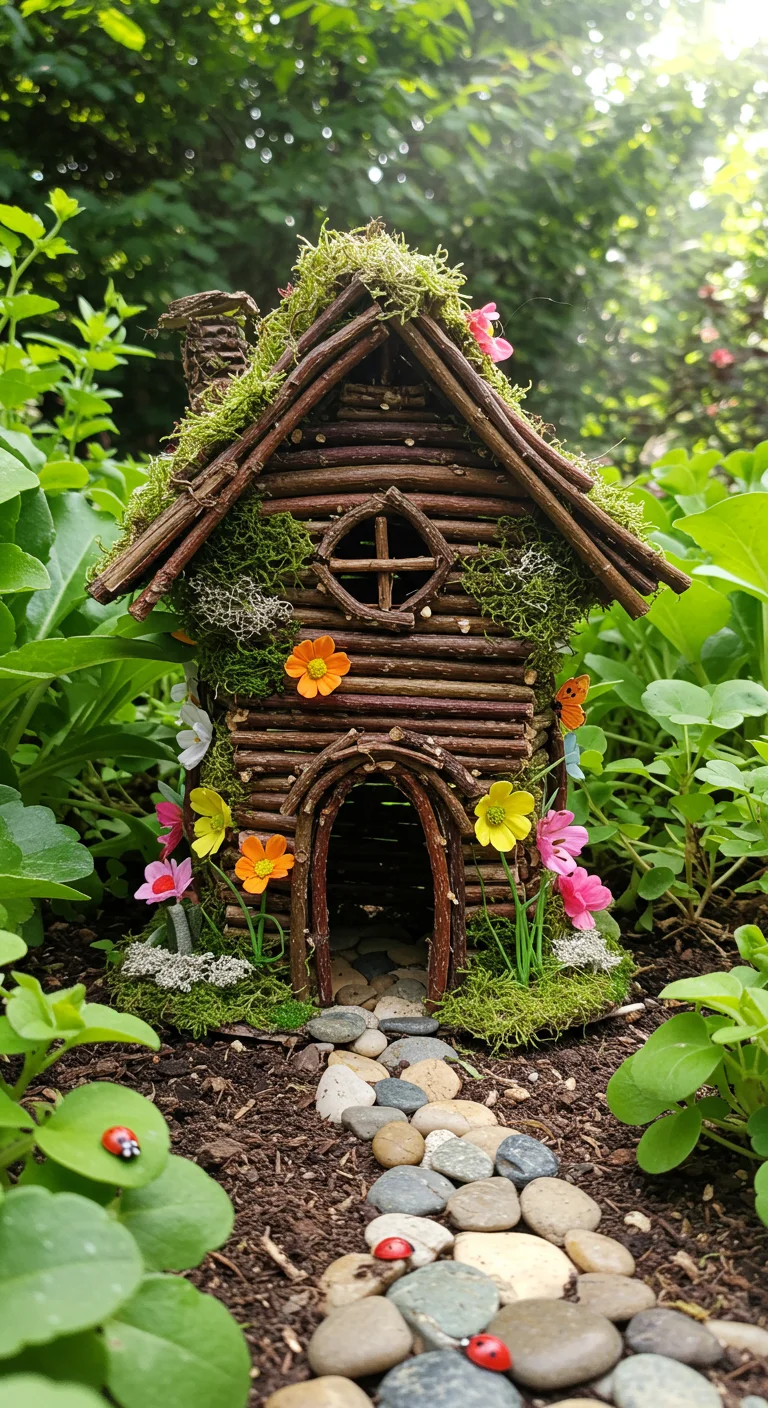
Creating twig fairy houses can add an enchanting touch to kids’ gardens, sparking their imagination and encouraging outdoor play. To construct these whimsical abodes, gather twigs of varying lengths and thicknesses, ensuring they are sturdy enough to withstand the elements. Start by building a simple base using larger twigs, then create walls by layering smaller twigs vertically, securing them with natural twine or glue. For an added magical touch, adorn the exterior with vibrant flowers, moss, or even tiny pebbles to create pathways. Involve your kids in the design process, allowing them to personalize their fairy houses with decorations like painted stones or small found objects. This project not only instills creativity but also teaches children about nature and the importance of craftsmanship.
20. Twig Herb Spiral: A Unique Way to Grow Your Herbs
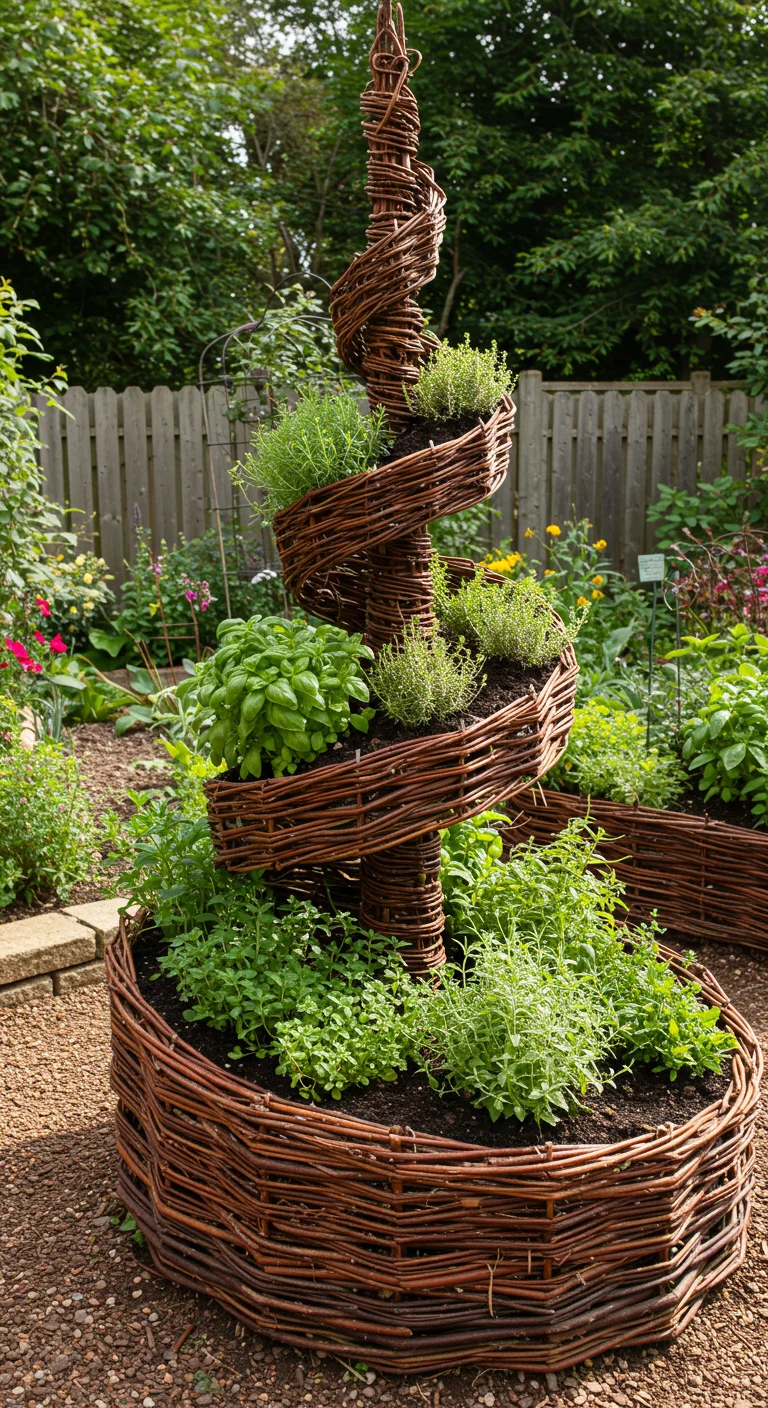
The Twig Herb Spiral is an innovative and space-efficient way to cultivate a variety of herbs in your garden. Constructed using twigs and branches, this spiral design creates microclimates, allowing different herbs to thrive in varying conditions. Start by creating a circular base with sturdy twigs, and then build upwards in a spiral shape, ensuring that the structure is stable. Fill the gaps between the twigs with soil, compost, and well-rotted manure to provide nutrients. Choose your favorite herbs like basil, thyme, and mint, and plant them according to their sunlight and moisture needs, with those preferring sunnier spots placed higher on the spiral. This not only maximizes your gardening space but also adds a stunning visual element to your garden, making it a conversation starter for visitors.
21. Twig Compost Bin: Eco-Friendly Waste Solution
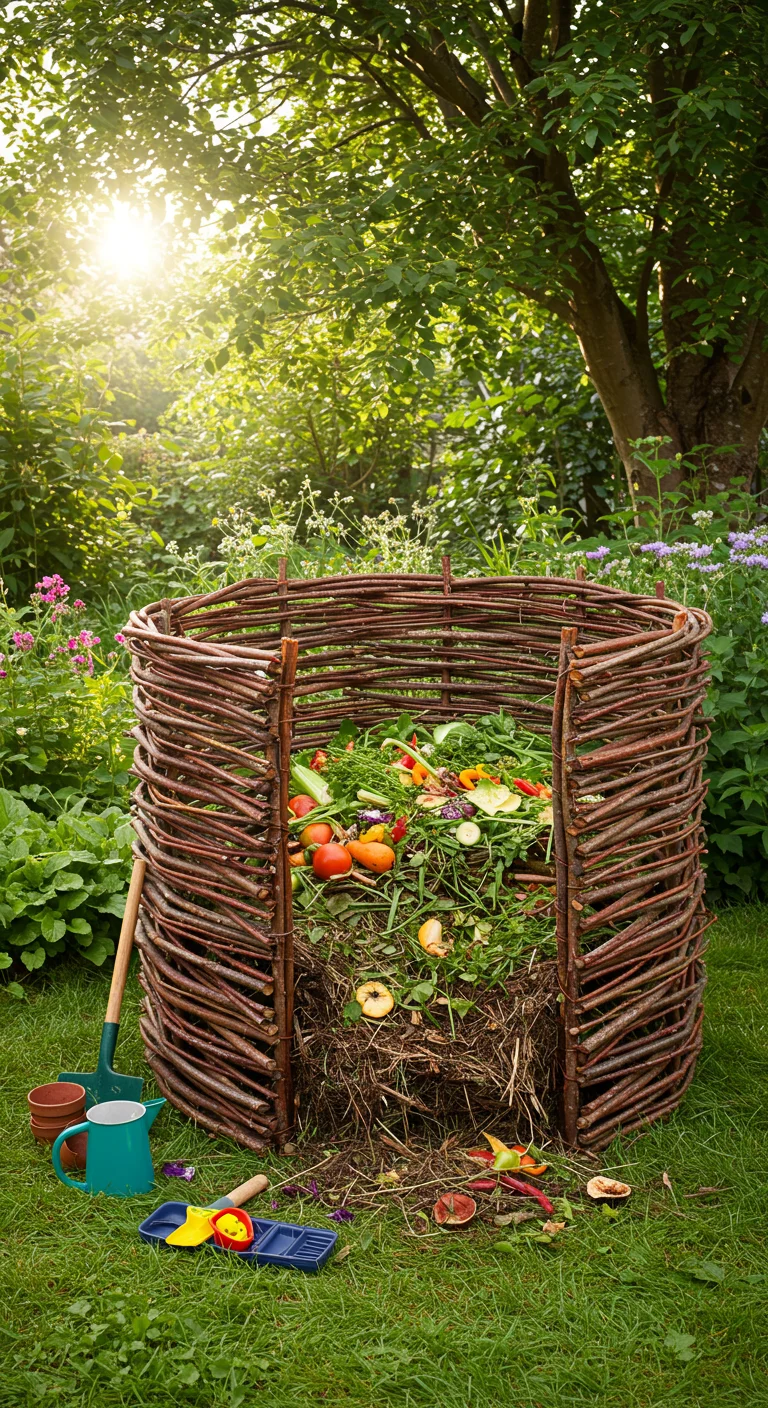
Creating a twig compost bin is an excellent way to manage garden waste while promoting eco-friendly practices. Start by gathering twigs and branches from your yard, ensuring they are dry and free of disease. Construct a simple square or rectangular frame using thicker branches to provide structure, then weave smaller twigs through the frame to create a mesh-like container. This design allows for airflow, which is essential for composting. Fill the bin with organic waste such as kitchen scraps, grass clippings, and leaves, layering them with twigs to promote aeration. Over time, microorganisms will break down the materials, producing nutrient-rich compost for your garden. This project not only recycles garden waste but also enhances soil health, making it a sustainable choice for environmentally conscious gardeners.
22. Twig Garden Art: Sculptures That Celebrate Nature
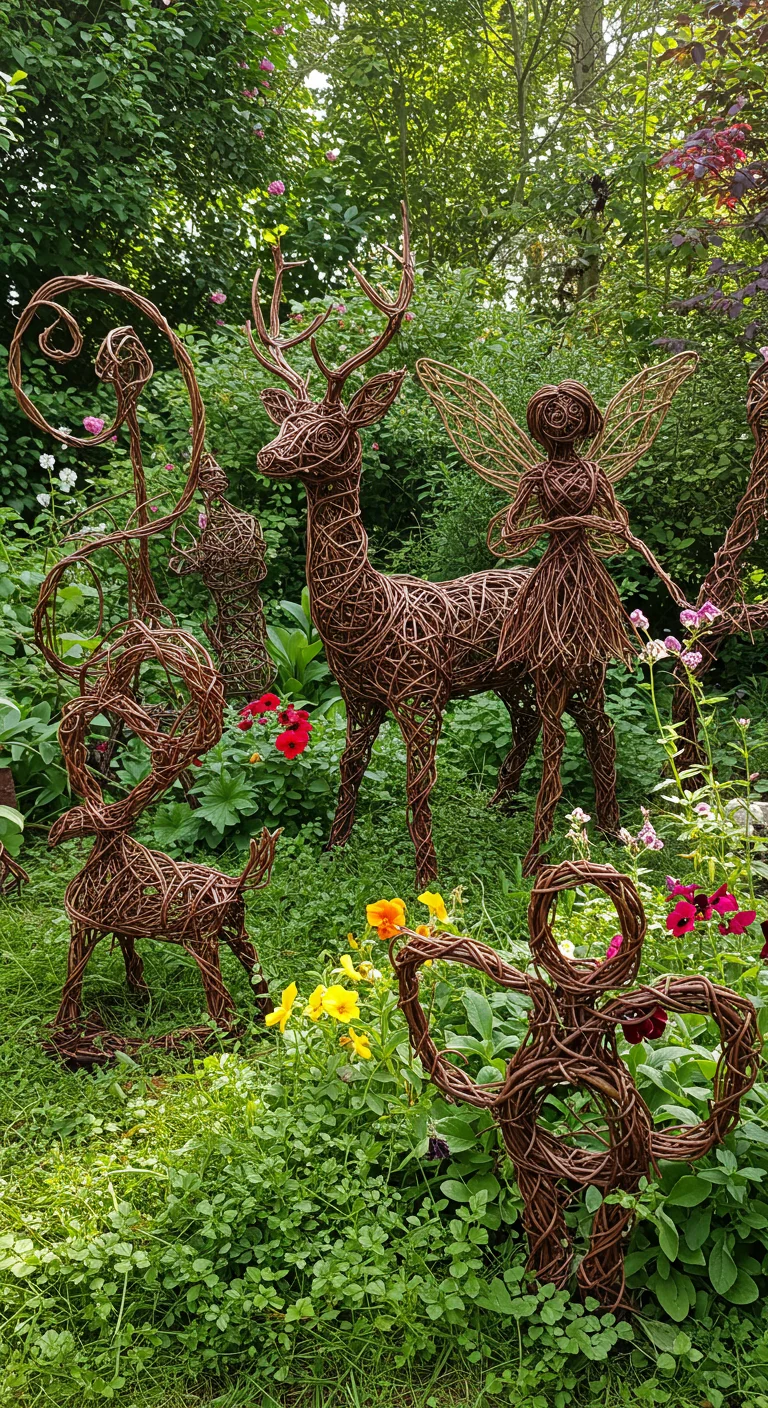
Twig garden art offers an enchanting way to celebrate nature while adding artistic flair to your outdoor space. By using collected twigs, branches, and natural materials, you can create unique sculptures that reflect the beauty of the environment. Consider crafting whimsical figures such as animals, fairies, or abstract shapes to enhance your garden’s aesthetics. Begin by selecting sturdy twigs and use a hot glue gun to assemble your design, ensuring each piece is securely attached. For added durability, treat your sculptures with weather-resistant spray. Not only do these creations add character, but they also encourage a deeper appreciation for the organic materials found in your landscape, making your garden a canvas of creativity and nature’s artistry.

